Canford Cliffs: 'He was one of the best racehorses in the last 50 years'
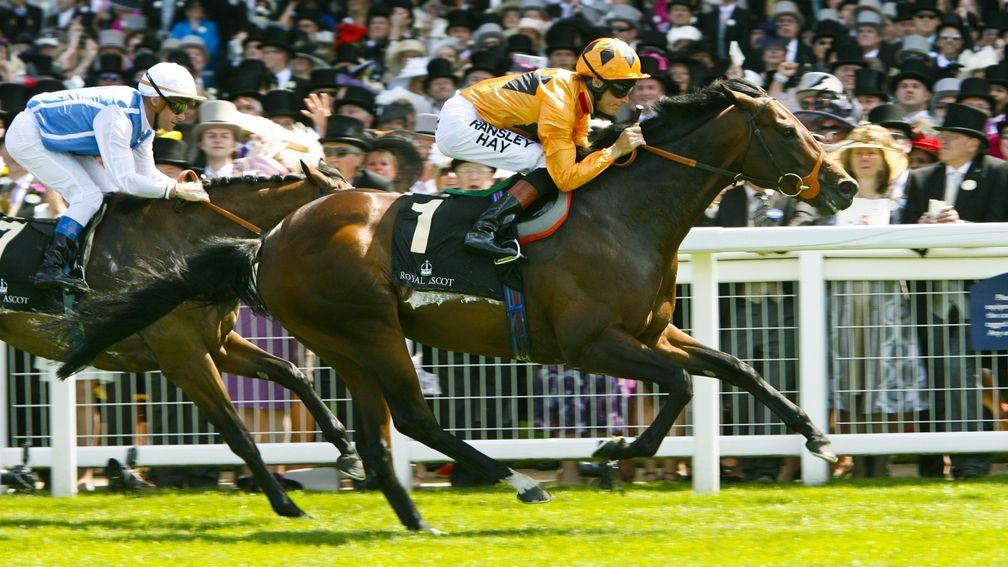
Fans' Favourites is a weekly feature in the Racing Post Weekender in which we talk to those closest to racing's most popular horses and find out why they tug on our heartstrings. This week's subject: Canford Cliffs.
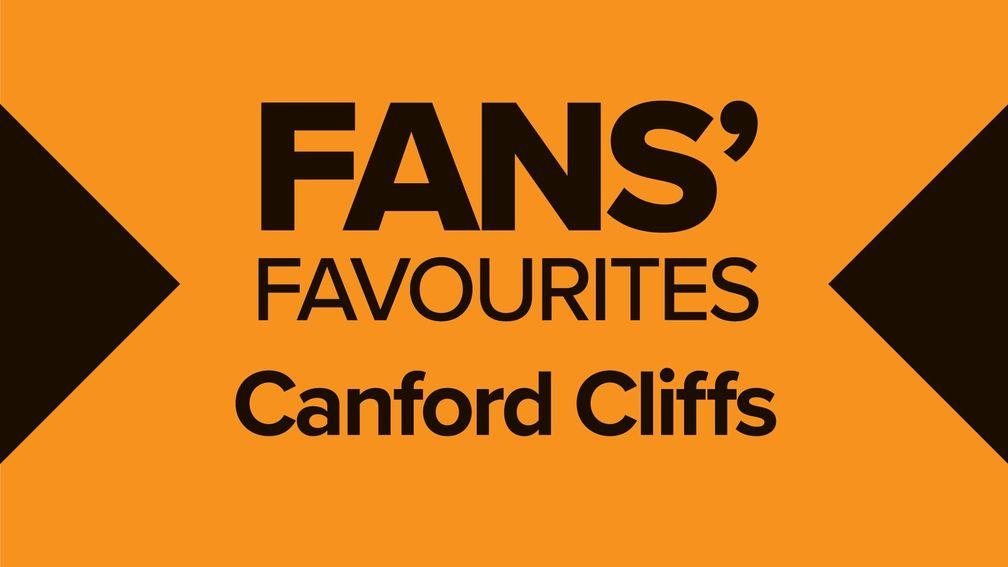
Canford Cliffs was the best horse Richard Hughes ever rode. He knew it from the first moment he sat on him. It was a bold claim, perhaps more astute with hindsight, but he told trainer Richard Hannon snr as much that very morning, months before the colt stepped out on the racecourse as a juvenile.
"I knew straight away, and I haven't ridden one since like him," Hughes says. "The first morning I rode him there was just a feeling, the way he hit the ground with such an abundance of speed. I knew he was the best. Richard thought I was drinking when I told him that."
Canford Cliffs delivered on his promise and more, landing five Group 1s in an illustrious career that saw him never finish outside the top three in 11 starts. Hughes would go on to tally more than 2,400 winners, but Canford Cliffs would always be at the top of his list.
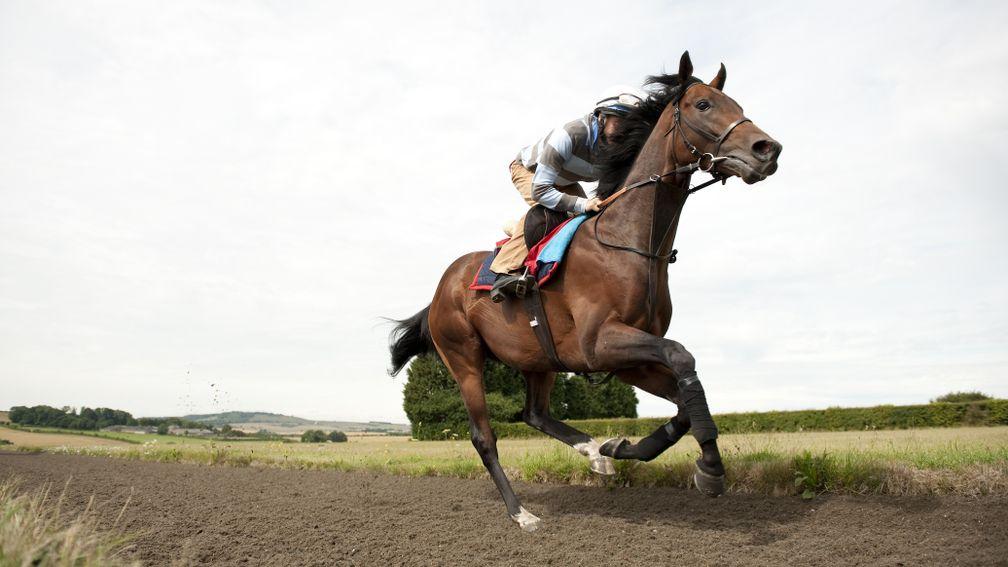
"It was a very brave man who would pay £50,000 for a Tagula," Hughes says. "It just shows the eye of Richard Hannon back in the day, but Canford was the last horse he sold at the yard. Plenty of people were offered him and nobody wanted him."
Eventually picked up by the Heffer Syndicate, the colt made his debut at Newbury, with bigger goals already on the horizon.
"He had so much ability that we went to Newbury thinking he couldn't get beaten, and he won by seven lengths," Hughes says. "We knew before that race the Coventry would be next. We were sure of it before he even ran."
The Coventry Stakes did come next, with Canford Cliffs the 7-4 favourite, and his performance was one of the most decisive moments of the meeting in 2009, the first of three Royal Ascots where he would stamp his mark.
Hughes recalls: "He got a little bit upset at the start and then he got away from me jumping out. He ran with the choke out and they normally finish last when they do that. I thought he was going to empty any minute but then he absolutely took off."
Canford Cliffs led from start to finish, scoring an impressive six-length win in the Group 2 contest, prompting Hughes to call him a "freak" in post-race interviews.
"I hadn't ridden anything like that before, or since," Hughes explains. "You could argue that you'd never seen a Coventry winner do what he did that day. He half ran away from me and still absolutely destroyed them.
"We had a bit of a battle with the press about Canford when he turned three. Everyone said he wouldn't stay a mile because he just had so much speed at Ascot. It's true he had speed, he could have won the July Cup to be honest, but I was very confident he would get a mile. He was always going to be a Guineas horse."
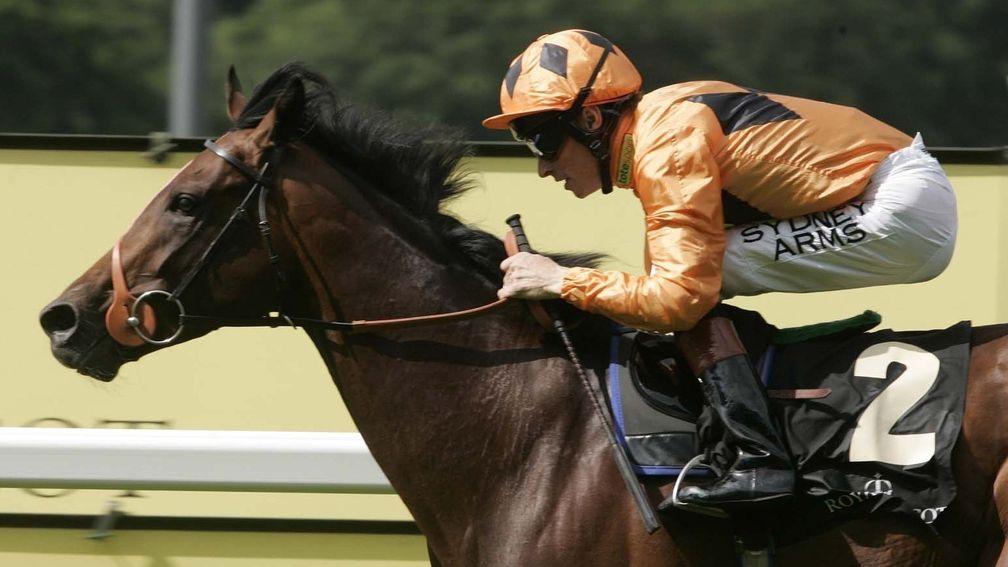
Canford Cliffs was sent off 12-1 for the 2,000 Guineas, by far the biggest odds of his career, but it was an even longer-priced colt who prevailed at Newmarket that day. Classic victory went to the French raider Makfi, a 33-1 shot, with the Hannon stable having to settle for second and third with Dick Turpin and Canford Cliffs.
"A furlong and a half out I thought he [Canford Cliffs] had won it, but the Dip did him," Hannon explained after the race. The undulating Newmarket course had taken the shine off Canford Cliffs's star quality, and it seemed the Dip was to blame.
"We kind of used it as a bit of an excuse, but deep down I think he took the piss out of me a little bit," Hughes admits. "He had it too easy in the winter. He was the best horse in the yard but he had a mind to him.
"All his work at home as a two-year-old was unbelievably good. Everything he did was just mind-boggling. And in the spring leading up to the Guineas, his work was fine. That's all. We didn't really address that his work wasn't as scintillating as the previous year.
"I thought he'd grown up and was getting more sensible, and that we'd win at Newmarket. He was the last horse off the bridle and I didn't even hit him once. I never got a chance, he was going that easy, but he found nothing on the day when I let him down.
"So, in between the Guineas and the Irish Guineas, I got on him one morning and let him know who was boss. The gallop was nearly on fire, he went up that fast."
The lesson was learned and Canford Cliffs never gave a lazy account of himself on a racecourse again. It was a turning point for the colt, who romped home to take the Irish 2,000 Guineas by three lengths. It was so easy that Hughes had time to pat him as they crossed the line. "He was electric that day," he recalls.
It was the start of an unbeaten streak for the partnership that would hold until his final race. A lost shoe turning for home could not stop the colt in the St James’s Palace Stakes on his return to Royal Ascot, where he turned the tables from Newmarket to see off stablemate Dick Turpin, with Makfi back in seventh.
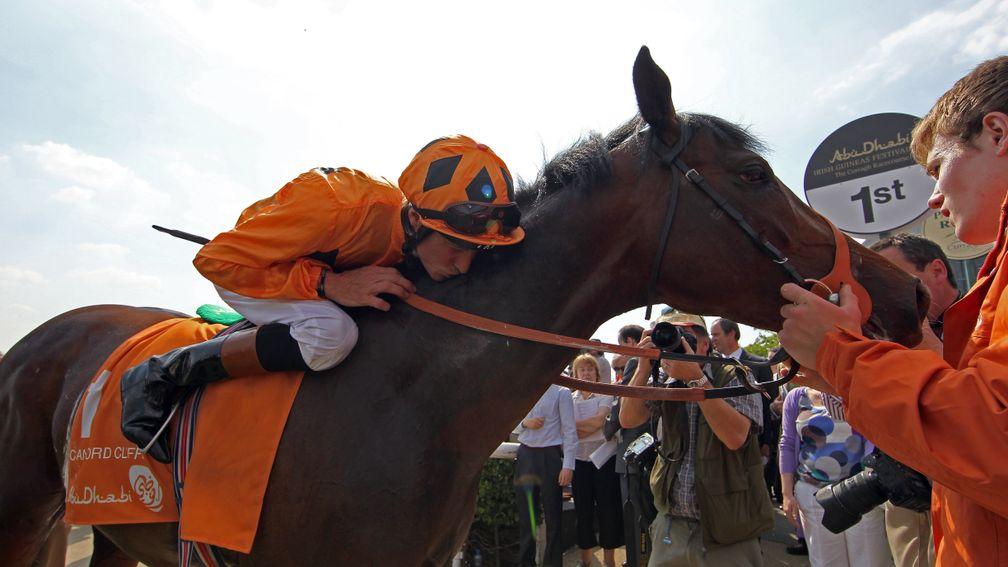
"He needed cover quickly to settle, we learned that in the Coventry. So a year later at Ascot I found myself with five lengths to make up when he lost his shoe. It took me a furlong to balance him before I could go. He wasn't impressive that day, but he got the job done," says Hughes.
It was another job done at Goodwood when Canford Cliffs took on the older horses for the first time in the Sussex Stakes, reeling in the previous year's winner Rip Van Winkle by a neck in a perfectly timed run by Hughes for the line.
"There's only one winning post at Goodwood, so there was no point in being in front anywhere else. Ideally, if I had been drawn beside Rip Van Winkle it would have been a lot easier. I had to get back to find cover, but he obliged again for me quite easily.
"He did a bit of work before Ascot alongside a horse called Total Gallery, who had won the Prix de l'Abbaye, and that horse couldn't even lead him. That’s the amount of gears Canford had.
"A lot of horses that you see on television, when they quicken up, it's deceiving – the horses in front are actually stopping. But he had a turn of foot, and if you pushed him he went faster."
With a Racing Post Rating of 130, Canford Cliffs was the top-rated miler in Britain and Ireland that year. Despite growing interest in his stud career, the decision was made to keep him in training for a four-year-old campaign.
"It was a brilliant training performance by Richard to keep him sweet the whole time," Hughes says. "He was getting bigger and stronger all the time and was a little bit cuter at four – you wouldn't dare be in front too long.
"He had so much speed, that was his forte, so it was important I used it at the right time."
Canford Cliffs had only two targets left to chase. The first was Goldikova, Freddy Head's superb French mare, who had been the only miler to outrank Canford Cliffs's RPR in 2010.
Following a reappearance win in the Lockinge Stakes, Canford Cliffs faced a showdown with Goldikova in the Queen Anne Stakes – his third and final trip to Royal Ascot. Once more, he was ready to beat whatever was in front of him.
Held up behind Goldikova, Canford Cliffs stalked the mare until the final furlong, where Hughes launched his challenge and in a few strides put the race to bed. The winning margin was a length.
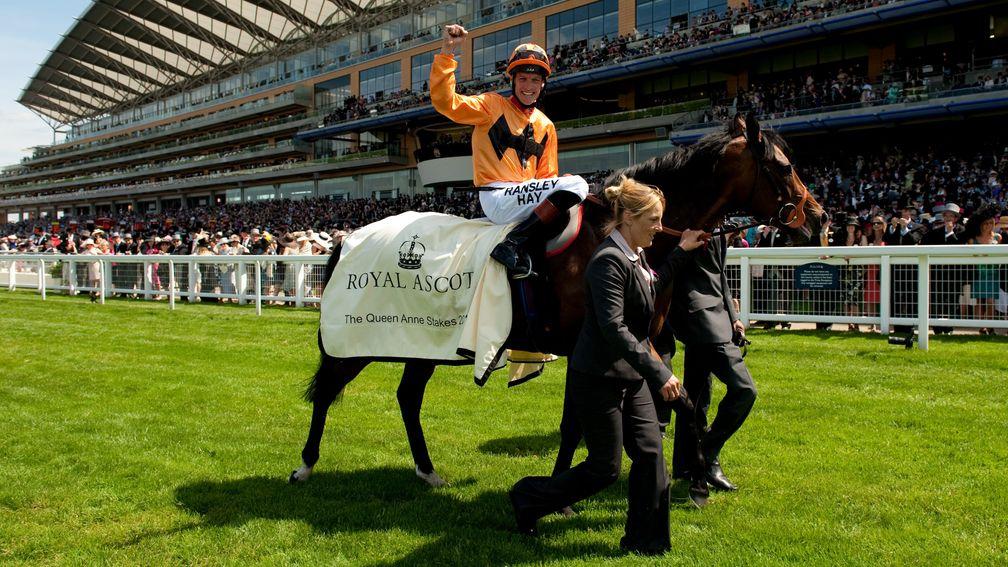
The same day as Canford Cliffs shot down Goldikova in the Queen Anne, another colt followed him on to the Royal Ascot honours board in the St James's Palace Stakes. It was the only challenger left for Canford Cliffs to conquer, an unbeaten three-year-old from the yard of Sir Henry Cecil. His name was Frankel.
Just as Canford Cliffs had made his debut against the older horses in the Sussex Stakes, Frankel arrived at Goodwood in July 2011 to vie for Canford Cliffs's crown. It was billed as the 'Duel of the Downs' – a showdown so hotly anticipated that only two other runners dared to take part.
Punters only had eyes for Canford Cliffs and Frankel – the promise of a historic match-up between the reigning champion and the young colt whose sublime demolition in the 2,000 Guineas had lit up Flat racing.
The race seemed to begin in a familiar fashion. Nestled behind Frankel, Canford Cliffs followed the danger until the time came for Hughes to push the button and launch an attack. But when Hughes went for the move, Canford Cliffs found nothing. Frankel tore away from the four-year-old and cruised to a five-length victory. It was the biggest losing margin of Canford Cliffs's career.
"He just wasn't on song that day," Hughes says. "I wasn't that happy when I got to the start with him and from halfway I thought 'oh no, I'm in trouble'.
"Usually with a good gallop all I had to do was sit behind until the last 100 yards. I thought I had to follow as long as I dared and pounce as late as I possibly could. Turning for home he hung across the track and he hadn't done that when he won the year before."
Canford Cliffs picked up a leg injury that day at Goodwood and never raced again. His retirement was announced the following month and the rematch in the Queen Elizabeth II Stakes never came to be.
"I'll never say he was better than Frankel," Hughes says, "but I would have loved to have had a good go at him. He wasn't the same horse that day at Goodwood. It wasn't to be."
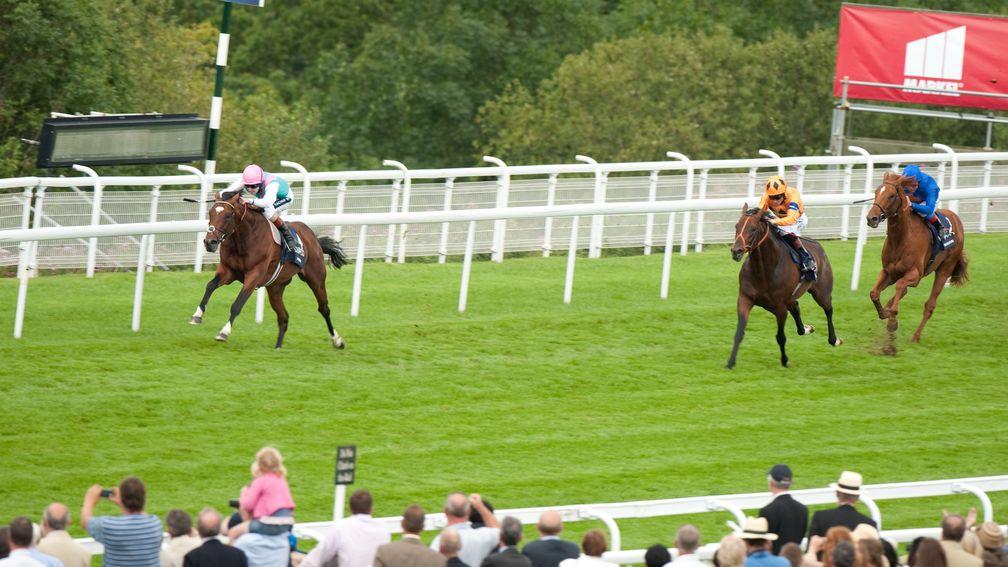
Canford Cliffs went to stud at Coolmore but never produced the same level of success in the barn as he had on the track. He moved this year to South Africa to join the stud farm of Ridgemont Highlands, where he now stands for a private fee.
"A lot of great horses aren't as good on the stallion side as they were as racehorses, but he was one of the best racehorses we've seen in the last 50 years," Hughes says.
"I just felt like I could beat anything every time I went out on him. I never had that feeling on another horse. I rode some good horses, Sky Lantern was brilliant, but he had three more gears than her, and she was a champion miler.
"He was just brilliant. I hope to God I come across another one – I haven't yet. I'm always keeping an eye out. But that feeling I got that first morning on him – I won't forget that in a rush."
Read more from our Fans' Favourites series:
Taghrooda: 'She turned towards the stands and everyone was going absolutely mad'
Kingman: 'There are some in the camp who think he'd have beaten Frankel'
Brando: 'Kevin always maintained he was going to turn into a right beast'
Tropics: 'I saw something that day I hadn't seen much – he worked like a train'
Sole Power: 'He wasn't your normal horse – he was more box office than that'
Accidental Agent: the outsider who took on and beat racing elite at Royal Ascot
Duke Of Firenze: a white knuckle-ride with plenty of dash
Lord Glitters: the 'phenomenal' horse who likes to get into a bit of trouble
Kingsgate Native: 'We jumped in the pool and ordered some champagne'
Laurens: the gritty northern lass who blossomed into a Classic winner
Cockney Rebel: the dual Guineas winner who proved a life-changer
The Weekender is out every Wednesday and is available at all good stores. You can also download the edition from 9pm on Tuesday evening
Published on 31 July 2021inFeatures
Last updated 11:27, 31 July 2021
- Government says it is working 'at pace' to have white paper measures in force by the summer
- 'The only thing you can do is lie fallow and regroup' - Meades to return with scaled-back operation following blank period
- The Gambling Commission has launched its new corporate strategy - but what are the key points?
- 'It was tragic it happened to Paddy but it was a good thing for the jockeys who followed - good came out of bad'
- Acquisitions, exits and retail resilience - what we learned from Flutter and 888's results
- Government says it is working 'at pace' to have white paper measures in force by the summer
- 'The only thing you can do is lie fallow and regroup' - Meades to return with scaled-back operation following blank period
- The Gambling Commission has launched its new corporate strategy - but what are the key points?
- 'It was tragic it happened to Paddy but it was a good thing for the jockeys who followed - good came out of bad'
- Acquisitions, exits and retail resilience - what we learned from Flutter and 888's results